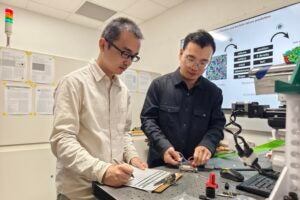Read about "Jackson School’s New Climate System Science Bachelor’s Degree Debuting in Fall 2024" at https://www.jsg.utexas.edu/news/2024/03/jackson-schools-new-climate-system-science-bachelors-degree-debuting-in-fall-2024/
Jackson School of Geosciences
Mar 28, 2024
Jackson School’s New Climate System Science Bachelor’s Degree Debuting in Fall 2024




